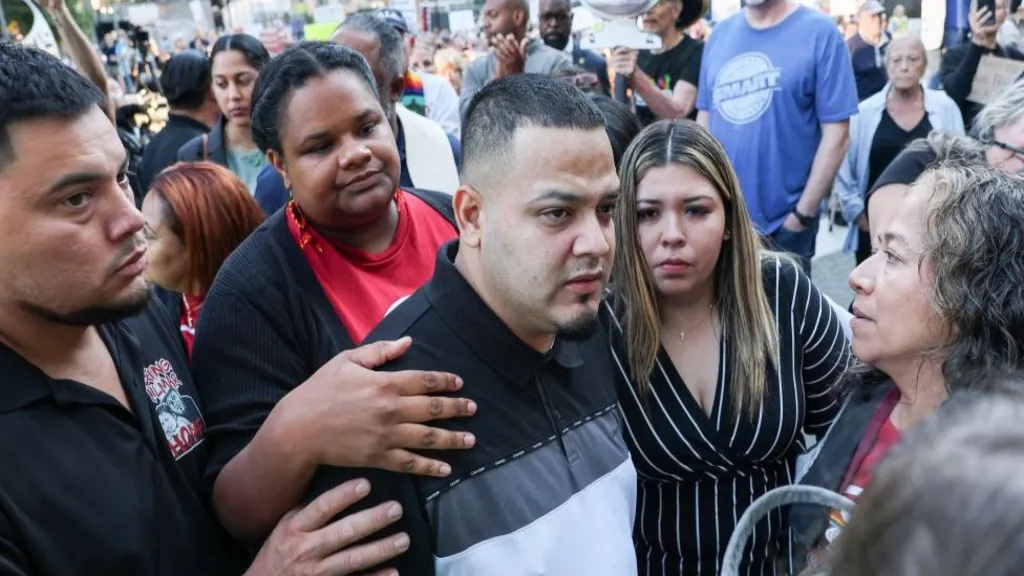Abrego Garcia Deportation: 5 Critical Facts You Must Know
The Abrego Garcia deportation case has drawn national attention after a Baltimore detention, raising serious questions about due process and potential risks if deported to Uganda. For official U.S. immigration procedures, see U.S. Citizenship and Immigration Services (USCIS).
Quick Links
- Who Is Kilmar Abrego Garcia?
- Arrest in Baltimore
- Legal Representation & Strategy
- Grounds for Deportation
- Risks if Deported to Uganda
The Abrego Garcia deportation has become a focal point for discussions on immigration enforcement and human rights. As Kilmar Abrego Garcia faces potential removal to Uganda, his attorneys warn of significant legal and safety risks. This explainer covers the five most important facts about the case and its broader implications.
1) Who Is Kilmar Abrego Garcia?
Kilmar Abrego Garcia has ties to both the United States and Uganda. While detailed personal information is limited for privacy reasons, the Abrego Garcia deportation has sparked discussions about fairness and transparency in removal proceedings. For background on related immigration cases, see NY Times Immigration Coverage.
2) Arrest in Baltimore
The deportation process followed his detention in Baltimore. Authorities state that the arrest complied with laws, though the defense questions procedural aspects that could impact later steps. Learn more from Baltimore Sun coverage and official Baltimore Police Department procedures.
3) Legal Representation & Strategy
Garcia’s lawyers are acting quickly to prevent removal. They argue that deportation could pose serious risks in Uganda. They are pursuing appeals, motions for stays, and other remedies, highlighting the importance of effective legal counsel in high stakes immigration cases. For resources on immigrant legal rights, see ACLU Immigrant Rights or American Immigration Lawyers Association (AILA).
4) Grounds for Deportation
Authorities cite prior legal or procedural violations as the basis for Abrego Garcia’s deportation. The defense disputes both the sufficiency of evidence and application of statutes, showing how complex these cases can be. For official U.S. immigration law references, see ICE statutes or U.S. Code Title 8 – Aliens and Nationality.
5) Risks if Deported to Uganda
Abrego Garcia Deportation: 5 Critical Facts You Must Know
The Abrego Garcia deportation case has drawn national attention after a Baltimore detention, raising serious questions about due process and potential risks if deported to Uganda. For official U.S. immigration procedures, see U.S. Citizenship and Immigration Services (USCIS).
Quick Links
- Who Is Kilmar Abrego Garcia?
- Arrest in Baltimore
- Legal Representation & Strategy
- Grounds for Deportation
- Risks if Deported to Uganda
The Abrego Garcia deportation has become a focal point for discussions on immigration enforcement and human rights. As Kilmar Abrego Garcia faces potential removal to Uganda, his attorneys warn of significant legal and safety risks. This explainer covers the five most important facts about the case and its broader implications.
1) Who Is Kilmar Abrego Garcia?
Kilmar Abrego Garcia has ties to both the United States and Uganda. While detailed personal information is limited for privacy reasons, the Abrego Garcia deportation has sparked discussions about fairness and transparency in removal proceedings. For background on related immigration cases, see NY Times Immigration Coverage.
2) Arrest in Baltimore
The deportation process followed his detention in Baltimore. Authorities state that the arrest complied with laws, though the defense questions procedural aspects that could impact later steps. Learn more from Baltimore Sun coverage and official Baltimore Police Department procedures.
3) Legal Representation & Strategy
Garcia’s lawyers are acting quickly to prevent removal. They argue that deportation could pose serious risks in Uganda. They are pursuing appeals, motions for stays, and other remedies, highlighting the importance of effective legal counsel in high stakes immigration cases. For resources on immigrant legal rights, see ACLU Immigrant Rights or American Immigration Lawyers Association (AILA).
4) Grounds for Deportation
Authorities cite prior legal or procedural violations as the basis for Abrego Garcia’s deportation. The defense disputes both the sufficiency of evidence and application of statutes, showing how complex these cases can be. For official U.S. immigration law references, see ICE statutes or U.S. Code Title 8 – Aliens and Nationality.
5) Risks if Deported to Uganda
Legal counsel has highlighted that deportation could place Kilmar Abrego Garcia in a precarious situation with multiple serious challenges in Uganda. These challenges span legal, social, and political dimensions:
- Limited legal protections: Uganda’s judicial system may not provide the same procedural safeguards available in the United States. This could make it more difficult for Garcia to contest legal actions, access competent legal representation, or ensure fair treatment under the law.
- Political and social risks: Depending on his personal background, affiliations, or previous legal history, Garcia could face political scrutiny or social discrimination. This may include harassment, threats, or pressure from local authorities or societal groups.
- Restricted access to basic rights and services: Deportees may encounter obstacles in securing essential services such as housing, healthcare, and employment, particularly if they lack family or community support in Uganda.
- Human rights concerns: International organizations have reported cases where deportees in Uganda experienced arbitrary detention, inadequate legal recourse, and other violations of fundamental human rights. These reports underscore the potential vulnerabilities that deported individuals may face.
- Adjustment and reintegration challenges: Returning after a long period abroad can present difficulties in readjusting to local cultural, economic, and social conditions, which may impact personal safety and well being.
These risks highlight the complex balance that courts and immigration authorities must consider between enforcing immigration laws and safeguarding individuals’ fundamental rights. Each deportation case requires careful evaluation of the potential consequences in the receiving country.
For further information and detailed country specific reports on human rights in Uganda, see Human Rights Watch: Uganda and the U.S. State Department: Uganda.
The Bigger Picture
Beyond this individual case, the Abrego Garcia deportation has led advocacy groups and analysts to examine systemic issues in immigration enforcement from detention conditions to access to counsel and speed of appeals. Media coverage continues to shape public understanding, emphasizing the importance of evidence based reporting. For further reading, see Migration Policy Institute.
FAQ
What does “Abrego Garcia deportation” refer to? It refers to ongoing removal proceedings involving Kilmar Abrego Garcia and the legal, procedural, and human rights questions raised by potential deportation to Uganda. Is there a timeline for the case? Timelines vary due to hearings, appeals, and stays of removal. Legal strategy and court schedules influence duration. Where can I learn about immigration procedures? Check official resources like U.S. immigration court guides or USCIS official site.
Editor’s note: This article is for general information and does not constitute legal advice.
The Bigger Picture
Beyond this individual case, the Abrego Garcia deportation has led advocacy groups and analysts to examine systemic issues in immigration enforcement from detention conditions to access to counsel and speed of appeals. Media coverage continues to shape public understanding, emphasizing the importance of evidence based reporting. For further reading, see Migration Policy Institute.
FAQ
What does “Abrego Garcia deportation” refer to? It refers to ongoing removal proceedings involving Kilmar Abrego Garcia and the legal, procedural, and human rights questions raised by potential deportation to Uganda. Is there a timeline for the case? Timelines vary due to hearings, appeals, and stays of removal. Legal strategy and court schedules influence duration. Where can I learn about immigration procedures? Check official resources like U.S. immigration court guides or USCIS official site.
Editor’s note: This article is for general information and does not constitute legal advice.




